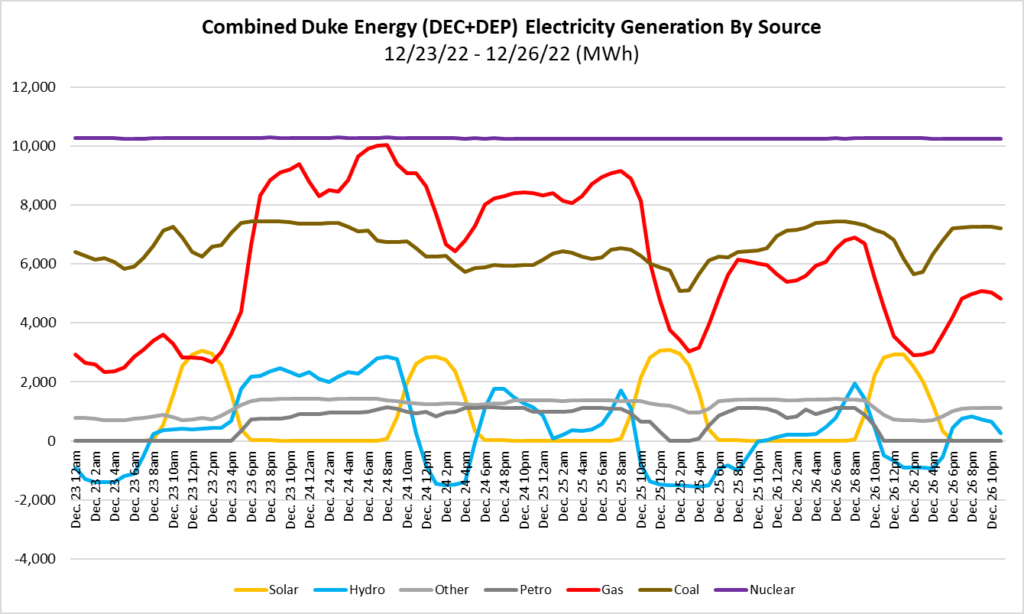
Above: Duke Energy’s self-reported energy generation during its 2022 Christmas blackout. For some reason, natural gas generation (in red), was extremely volatile. Solar, in yellow, was consistent throughout.
As soon as Duke Energy’s 2022 Christmas blackouts began, pundits were tripping over each other to blame renewable energy. There are three things to say about the dishonest claims that solar energy contributed to Duke Energy’s recent rolling blackouts.
- First, the solar generation on Duke’s system performed as expected while coal and gas plants failed [and out-of-state imports weren’t available].
- Second, Duke has made no reductions in the coal, gas, and nuclear resources on its system to meet winter demand because of solar additions. Whether those other resources were adequate to meet extreme winter demand (they were not) had nothing to do with how much solar is on the system.
- Finally, the plan to reduce Duke’s future carbon emissions that has been championed by Governor Cooper and enacted into law by the Republican General Assembly requires that system reliability be maintained at least cost. Utility scale solar, onshore wind, and energy storage are by far the least cost energy sources. Adding solar to the system will provide least-cost carbon energy, while other resources, including nuclear, natural gas, battery storage, hydro and wind, will ensure that the reliability is maintained when the sun isn’t shining.
By the Numbers
You can read Duke Energy’s hourly own generation data as reported to the US Energy Information Administration here. Here’s what jumped out to us on our first reading:
- Solar on Duke’s combined system (DEP+DEC) performed quite well from Dec 23-26, generating 1.6 – 1.75X more than the daily average over the prior month.
- Duke’s gas output fell precipitously starting 8am Saturday morning (Dec. 24), from a combined ~10 GW down to 6.4 GW by 3pm, and its combined coal output fell from ~7.4 GW at 4am Saturday morning down to 5.7 GW by 4pm (chart above).
On a normal day, you’d expect Duke to ramp down their gas generation as solar generation ramps up. It’s very strange Duke would have ramped down their gas so much in the middle of rolling blackouts, unless one or more of their gas units failed.
- Meanwhile, Duke’s combined hydro output fell from 2.8 GW as of 9am Saturday morning (Dec. 24), down to negative 1.5 GW by 1pm Saturday, which suggests their pumped hydro was charging (pumping) during this period.
Jan. 3, 2023 at 10am, Duke Energy will brief North Carolina regulators on its Christmas weekend blackouts and requests to customers to reduce use at the NCUC staff conference. NCUC will stream the hearings through its Youtube Channel.

Recent Comments